Ngoc Linh ginseng has been discovered by ethnic minorities in Quang Nam, especially the Xo Dang people in Nam Tra My district, for a long time, associated with the people's forest-going habits. Through the process of closely attached to ginseng, the people have accumulated many valuable experiences to apply in the process of planting, caring for, and processing to effectively serve the economic , cultural, and social development of the community here.
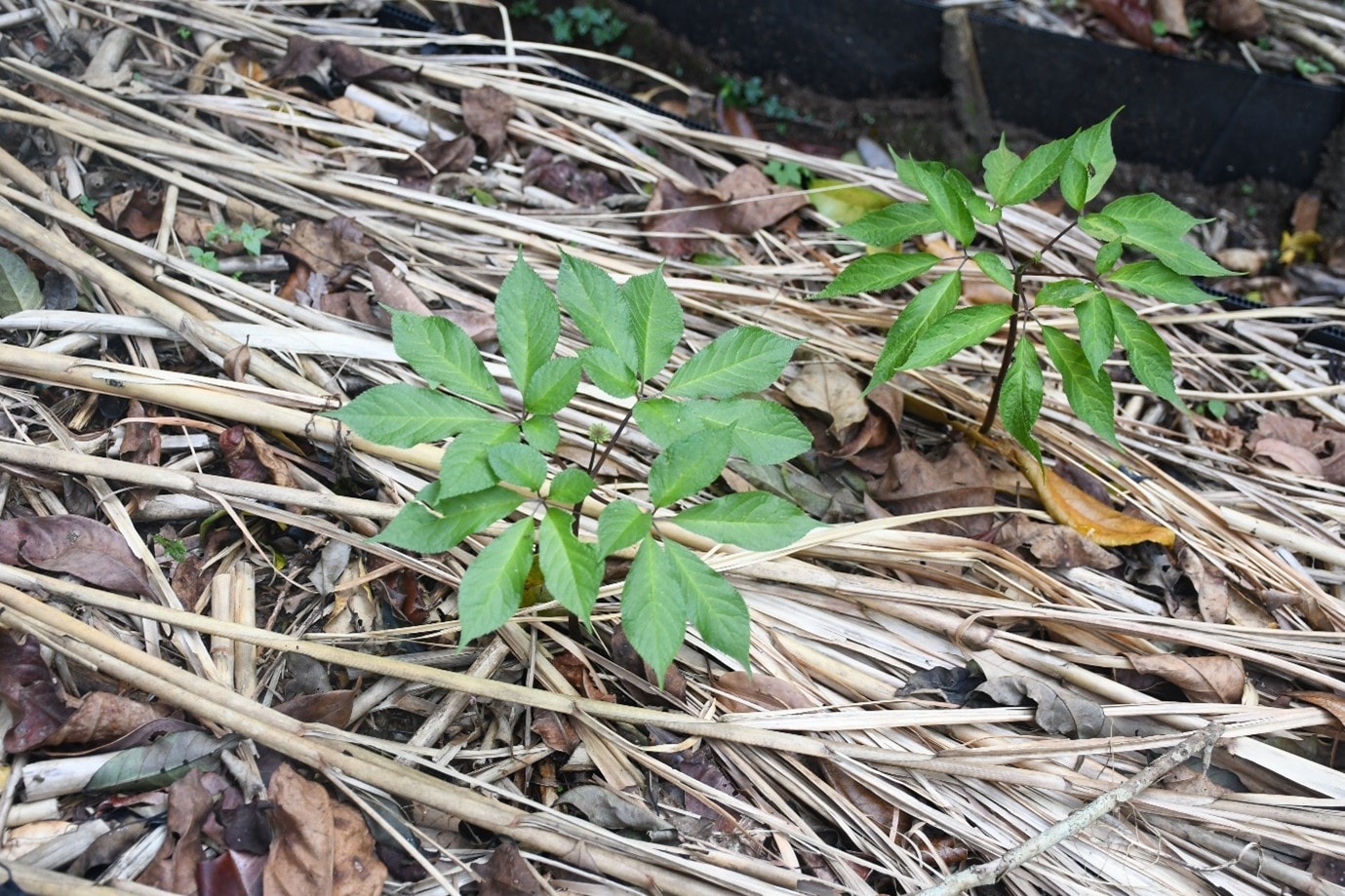
Folk knowledge about discovery and exploitation of Ngoc Linh ginseng
According to the memories of the elderly and those with many years of experience growing ginseng in the locality, their previous generations discovered the effects of ginseng during their trips to the forest to set up animal traps, and then passed them down to their descendants, such as: If your hands and feet are injured and bleeding, dig up the ginseng root, chew it and apply it to the wound to stop the bleeding quickly and the wound heals quickly; when you have a stomachache, eat the ginseng root and the pain will go away immediately; when you are tired, chew the ginseng root and you will feel better quickly, sometimes eating the ginseng root all day without feeling hungry,... Therefore, people gave it the popular name "precious medicinal plant". When they discovered ginseng on the way to trap animals, they cleared a small area for the plant to grow well, and at the same time marked it to know that the area had precious medicinal plants so they could use them when needed. At first, those who knew the effects of ginseng kept it a secret to themselves, including the secret of its effects and where the ginseng was in the forest. Since then, people always carry ginseng with them as a "protective" medicine to use in all necessary cases (so it is called "hidden medicine" meaning "hiding" precious medicine).
Through many years of forest trekking, local people have accumulated experience in identifying areas where ginseng grows a lot. Accordingly, ginseng grows best at an altitude of 1,700m to 2,100m, growing more in the East, so in Ngoc Linh mountain area in Nam Tra My district, ginseng grows more. Ginseng adapts well to the foot of mountains, near streams, places with dense grass, sometimes growing on rocks or rotten tree stumps. With many years of field experience of local residents on the characteristics and distribution of ginseng in nature, it is very convenient to apply it to planting and cloning the origin of ginseng locally.
Folk knowledge about planting and caring for Ngoc Linh ginseng
Not purely exploiting, from very early on, some residents around Ngoc Linh range in Nam Tra My district knew how to grow and care for this medicinal plant in nature with simple methods for use when needed. They dug up natural ginseng in places where there was a lot of it and then planted it scattered in places where there was no ginseng on the way to trap animals, the purpose was to always have ginseng available for use when trapping animals. Gradually, experience in growing and propagating was accumulated, the community switched to developing concentrated planting in gardens.
In Nam Tra My district, from only about 110 households in Tra Linh commune growing ginseng on an area of 65 hectares in 2014, it has now developed to 7/10 communes (Tra Linh, Tra Cang, Tra Nam, Tra Don, Tra Tap, Tra Leng and Tra Don) with 533 households growing ginseng.
Knowledge and experience in breeding and growing Ngoc Linh ginseng
Fruit harvesting: Harvest fruit when the tree is 5 years old or older, ensuring the following characteristics: The fruit is kidney-shaped; when ripe, it is red with black dots; the fruit is 0.5 - 1cm long, the fruit is 0.4 - 0.8cm in diameter; the weight of 1,000 fresh fruits is 130 grams or more; the fruit has 1 or 2 seeds; the seeds are kidney-shaped, ivory or light yellow in color, the shell has longitudinal stripes; and is not infected with pests or diseases. The usual fruit harvesting season is from July to September every year.
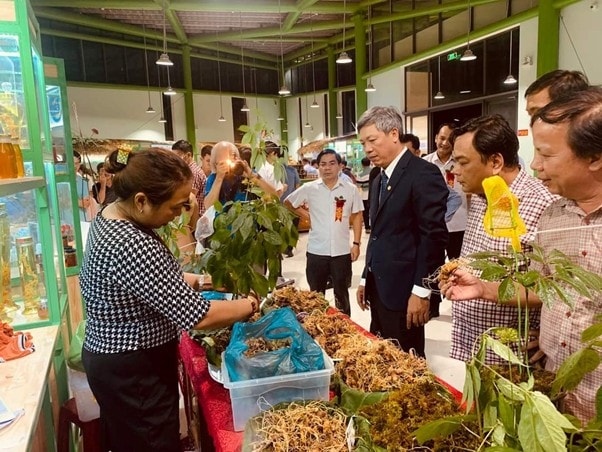
Sowing and seed treatment season : Seeds can be sown in two seasons with two different forms depending on how the fruit and seeds were previously treated. The first season, from July to September every year: After harvesting the fruit, remove the unqualified fruit and sow immediately (without peeling the shell). The second season, from December every year: After harvesting the fruit, peel the shell to get the seeds, process the seeds and keep them indoors for 4-5 months before sowing (sow as soon as the seeds are ready to germinate). Regardless of the sowing method, the plants will germinate around January of the following year.
To process seeds before storage, rub them with your hands to remove the flesh (do so gently to avoid damaging the seed coat), wash with clean water, drain, then put them in a mesh bag (500 - 1,000 seeds/bag) and put them in a storage bin.
Knowledge and experience in sowing on nursery beds : The nursery is chosen in a place with a moderate slope for good drainage, no water stagnation during heavy rains, the soil is moist enough, rich in humus, and free of harmful pests. Seeds are sown about 1cm deep, with a density of about 200 - 300 seeds/m² of land. Do not sow seeds close together, the distance between seeds is about 5cm, if the fruit has 2 seeds, split them in half before sowing. After sowing, spread a layer of dry leaves and cogon grass on the surface of the bed to keep the seeds moist, limit weeds, and prevent erosion... During the process of making nursery beds, depending on the terrain, arrange the appropriate bed size, so as not to affect forest trees and regenerated trees.
Knowledge and experience in sowing seeds in trays : To effectively care for seedlings and limit pests (originating in the soil), seeds should be sown in trays and placed in the nursery for care. Trays and baskets made from bamboo or wood should be used for sowing seeds. Do not use trays or baskets made from plastic, foam boxes or other industrial materials that can easily pollute the environment and cause the risk of accumulation and outbreaks of diseases that harm seedlings. First, dig the soil outside, clean the soil floor, then incubate it in a bag for a while before using it for sowing seeds. Put clean substrate in the tray in a layer of about 8 - 10cm and sow the seeds, then spread a layer of clean substrate 1cm thick to cover the seeds, spread a layer of dry leaves or chopped cogon grass on the surface of the tray to keep the seeds moist and warm, and limit weeds. After sowing, do not water the seeds but use natural rainwater for the seeds to germinate.
Care after sowing : Farmers' experience shows that although ginseng likes high humidity, it cannot withstand waterlogging, so after sowing, do not let the nursery get waterlogged or flooded when it rains; at the same time, regularly weed and water to keep the plants moist. To ensure that the seedlings grow well and avoid adverse effects of weather (heavy rain, hail, cold dew, etc.), pests should use curtains, roofing sheets, etc. to cover the seedlings in the nursery to ensure a shade level of about 70 - 80%. In addition, regular monitoring is required to promptly detect pests of seedlings in order to have effective management measures. Care for seedlings in the nursery until around July - August of the year, then they can be exported (1-year-old seedlings).
Knowledge and experience in producing two-year-old seedlings
Normally, 1-year-old seedlings are eligible to be planted in the production garden (under the forest canopy). However, to achieve higher efficiency and limit post-planting losses due to adverse weather, pests, etc., they should be kept in the nursery until they are 2 years old before being planted in the garden. The production season for 2-year-old seedlings starts from August to September.
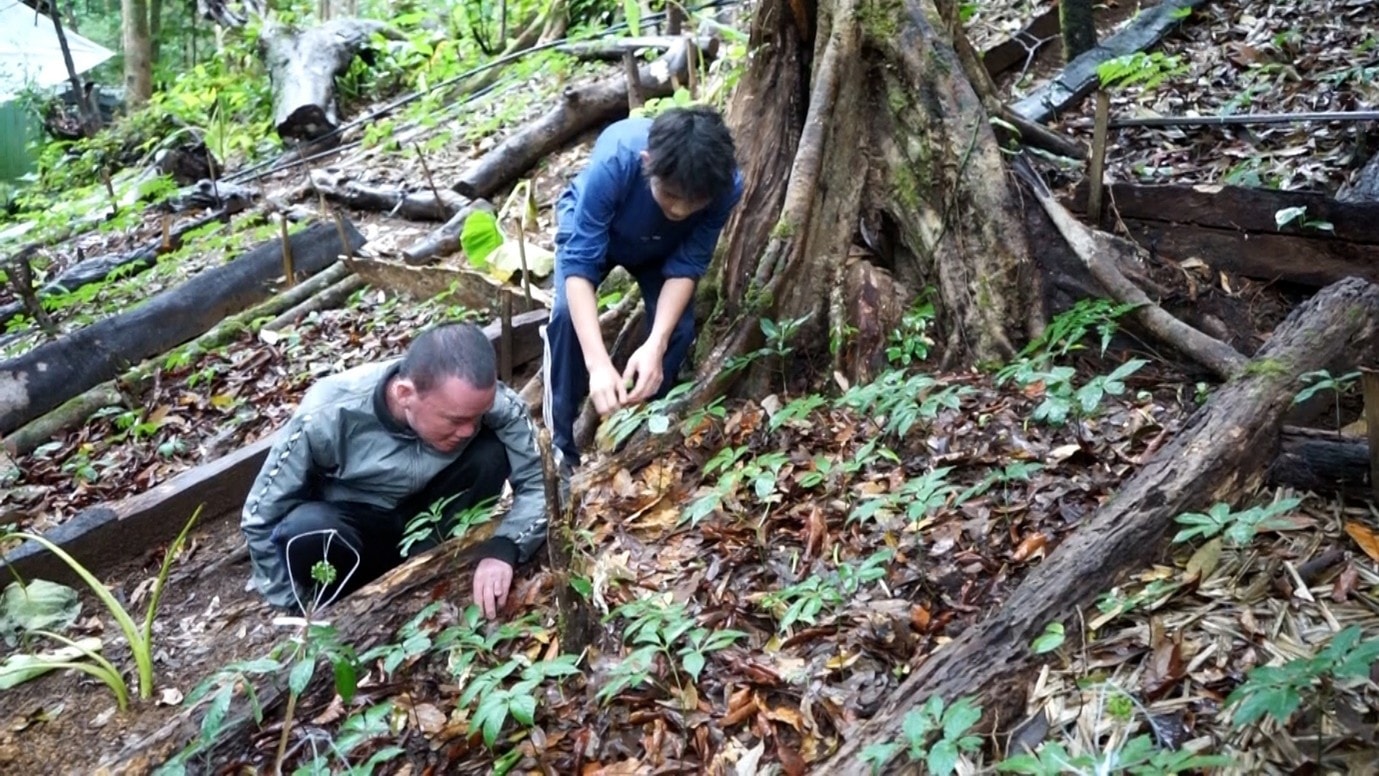
Before planting, classify the plants, those that do not meet the standards are arranged to be planted separately for easy care. Then cut off the stem and leaves of the plant, only plant the root part. When cutting off the stem and leaves, leave a section of the stem about 1cm from the root part, do not cut close to the root, plant in a tray or on a bed. Plant in straight rows and evenly spaced, 10 - 15cm between rows, 10 - 15cm between plants, 1 - 1.5cm deep. After planting, spread a thin layer of chopped dry leaves on the surface to retain moisture, limit weeds, ...
Knowledge and experience in growing Ngoc Linh ginseng
Choose a garden, prepare planting conditions : Plant Ngoc Linh ginseng under the forest canopy at an altitude of 1,500m - 2,000m, with a canopy of 0.7m or more, rich in humus and moist soil. Do not plant Ngoc Linh ginseng at the top of a steep hill, but at least 30m or more away from the top of a steep hill. Form the planting bed with wood, bamboo, and rattan harvested from production forests or make use of bamboo and rocks, and arrange them to create the shape of the planting bed.
Density and planting distance: Because only less than 30% of the forest area is used to grow Ngoc Linh ginseng, the planting density is from 20,000 - 25,000 trees/ha. Planting distance, row to row is from 35cm - 40cm, tree to tree is from 0.3m - 0.5m.
Digging holes and planting: Only plant shallowly on the ground, the tree will grow better and safer later. After planting, cover the bed with a layer of dry leaves to create humus, retain moisture, add nutrients to the soil, limit weeds, and prevent soil erosion.
Knowledge and experience in caring for and protecting Ngoc Linh ginseng
In the process of caring for and protecting ginseng plants, the community has a lot of experience showing thoughtfulness and thoroughness so that the plants can grow best. After planting, ginseng plants are regularly monitored and weeded in the planting beds. Weeding is not done during the rainy season, especially during the dormant period to limit soil erosion and direct impact on ginseng plants. At the same time, it is necessary to regularly monitor and take measures to prevent the flow of forest leaves on the ginseng beds to maintain the natural humus layer, regularly check and collect dry branches placed on the bed surface to avoid breaking the ginseng plants...
For harmful insects, the most effective measure is to monitor regularly and catch/repel manually. For damage caused by weather, there are ways to cover to protect, even among the people, many households do not cover to ensure the principle of preserving the naturalness of ginseng. Chemical drugs and fertilizers are the types that are almost never used by the people in the planting and care process.
The protection of ginseng gardens is very strict, with the participation of the community in general management through the model of establishing guard posts. Each post is fenced with B40 iron mesh over 2m high, with only 1 entrance and exit, and a guard post away from the gate to prevent theft and avoid wild animals. Each post has a person assigned to be on duty 24/7. Each post elects a chief and deputy chief. Entering the ginseng garden must be approved by the chief, deputy chief and garden owner. When any garden wants to sell ginseng, it must report to the chief, when ginseng is exploited, there must be someone in the post to witness to confirm whether the exported product is real or fake... This is a protection model with the characteristics of local people based on the awareness and common responsibility of the whole community; in fact, it has brought about very good results in recent times.
Knowledge and experience in processing Ngoc Linh ginseng
The tradition of local people in the past was mainly to process it by soaking it in wine or honey. Recently, Ngoc Linh ginseng has been processed into a number of other typical products such as Ngoc Linh ginseng tea, Ngoc Linh ginseng flower wine, in addition to Ngoc Linh ginseng candy, Ngoc Linh ginseng drinks, Ngoc Linh ginseng ice cream cookies, Ngoc Linh ginseng bird's nest, Ngoc Linh ginseng immune-boosting effervescent tablets, Ngoc Linh ginseng brown rice cakes, Ngoc Linh ginseng extract, etc.
Associated with ginseng and the profession of growing Ngoc Linh ginseng is the tradition of going to the forest of ethnic minorities in Nam Tra My district for hundreds of years. In the process of practicing the profession, local residents still maintain some taboos of forest workers, attached to slash-and-burn agriculture . Inheriting the traditional belief of worshiping the Forest God and the Ginseng God of the local community, in 2020, the Ginseng God Temple was inaugurated in 2, Tra Linh commune to meet the religious needs of residents. In addition, the customs and practices of going to the forest and practicing some traditional occupations are still passed down by local ethnic minorities and applied in daily life, especially in ginseng growing. Along with that, since 2017, the Ngoc Linh Ginseng Festival has been maintained in early August every year and has become a unique cultural activity that is awaited by the Nam Tra My community as well as residents across the country. The first Ngoc Linh ginseng and medicinal herbs market was also held in October 2017, bringing in a large source of income for the locality and ginseng growers, while also meeting the demand for ginseng, Ngoc Linh ginseng products and many local products of tourists.
From the values of folk knowledge about Ngoc Linh ginseng, associated with traditional customs and rituals and the long-standing history and culture of many generations of residents in Nam Tra My district, "Folk knowledge about Ngoc Linh ginseng in Nam Tra My district, Quang Nam province" has been recorded by the Ministry of Culture, Sports and Tourism in the List of National Intangible Cultural Heritage according to Decision No. 1355/QD-BVHTTDL, dated May 14, 2025. This is an honor and pride of the local government and community, and at the same time is one of the bases to create conditions for people to rise up from poverty, stabilize their lives, preserve the knowledge, customs and good practices of the people associated with the responsibility of preserving the precious primeval forests of the southern mountainous region of Quang Nam, contributing to maintaining security and social order of the locality in the coming time.
Source: https://baoquangnam.vn/hieu-them-ve-tri-thuc-dan-gian-ve-sam-ngoc-linh-o-nam-tra-my-3155045.html







![[Photo] Top players gather at the 2025 Nhan Dan Newspaper National Table Tennis Championship](https://vphoto.vietnam.vn/thumb/1200x675/vietnam/resource/IMAGE/2025/5/23/9ad5f6f4faf146b08335e5c446edb107)


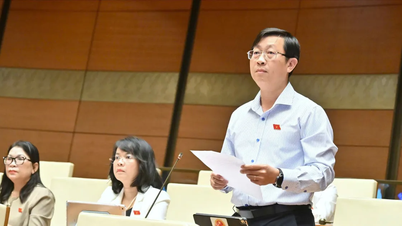



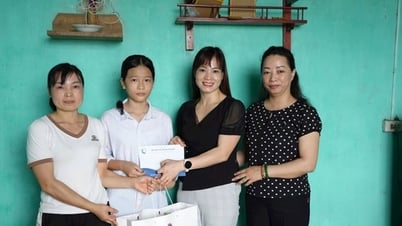









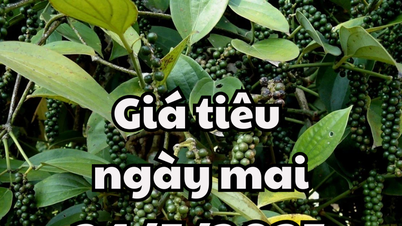
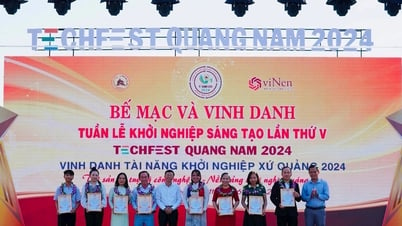
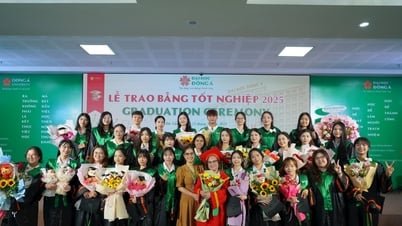


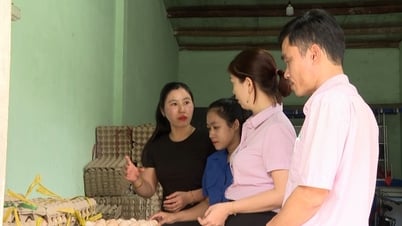

































































Comment (0)